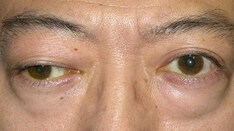PHOENIX — New treatments for myasthenia gravis are bringing new promise to patients, but their use must be balanced against short-term and long-term risks, according to Pushpa Narayanaswami, MD, who discussed the topic at the 2023 annual meeting of the American Association for Neuromuscular & Electrodiagnostic Medicine (AANEM).
The first Food and Drug Administration–approved drug was pyridostigmine in 1955, and it was more than 60 years before the second drug, eculizumab, gained FDA approval in 2017. Activity in more recent years has been much more brisk with the approvals of efgartigimod in 2021; ravulizumab in 2022; and efgartigimod SQ, rozanolixizumab, and zilucoplan (Japan) in 2023. Eculizumab, efgartigimod, efgartigimod SQ, ravulizumab, and rozanolixizumab are approved for patients who are anti–acetylcholine receptor (AchR) positive. Rozanolixizumab is also approved for patients who are anti–muscle-specific tyrosine kinase (MuSK) antibody positive.
The new drugs have novel mechanisms of action, giving physicians more tools to treat the condition. The mechanisms fall into two general groups: C5-complement inhibitors and neonatal Fc receptor (FcRn) agonists. Dr. Narayanaswami sought to provide guidance in thinking about how to prescribe the new drugs. "How do we really use these drugs? It's sort of confusing in terms of where they fit in in the algorithm. I don't pretend to have the answers, but I'm going to sort of give you a general overview of how I look at these based on the trial data and based on what we've done in the past," she said during her talk.
Assessing the risk/benefit ratio
Myasthenia gravis treatment strategies should take into account both disease control and minimization of the adverse effects of treatment, which can include both short- and long-term concerns such as hematologic issues, changes in mood and sleep, diarrhea, infection risk, detriments to bone health, hypertension, diabetes mellitus, glaucoma, and cancer.
Disease control can be subjective. "Each patient may have a different approach to what their disease control means, so we don't quite understand what the definition of disease control is," said Dr. Narayanaswami. For example, "[a physician] may think of a sleep disturbance as mild, but [the patient] may not. They may not be able to function, so a lot of conversations [are needed] there," she added.
The international consensus guidance for myasthenia gravis, first published in 2016 and updated a few years later, which Dr. Narayanaswami coauthored, suggested that minimal manifestation of disease is achievable and is relevant to patients. "These are patients who are doing well, they come to your office and say, ‘I'm doing well, I really don't have any problem [though they may have some weakness],' " said Dr. Narayanaswami. In such patients, mild, grade 1 side effects from medications are acceptable.
Dr. Narayanaswami discussed the efficacy of older drugs, including evidence from a 2022 study of 367 patients, that found that 72% of patients achieved MGFA-PIS (postintervention status) of minimal manifestations within 2 years of treatment. That rose to 76% within 3 years and 84% within 5 years. "The incremental benefit [after the first 2] years was not huge, and I think that's something to pay attention to," said Dr. Narayanaswami. The study also found that disease duration at first visit was shorter among patients who achieved minimal manifestation at 12 months versus at 16 months. That finding follows a trend in current thinking about treatment of myasthenia gravis. "Chip (James) Howard [of Duke University], who's my sort of guru, says you've got to address this like MS. You've got to hit them early and hit them hard. And I think we're seeing more and more of this. If you think about it even in your clinical practice, patients who did well tended to do well early on," said Dr. Narayanaswami. She noted an important limitation in that the study did not adjust for confounders or covariates.
In addition, the PROMISE-MG study, which Dr. Narayanaswami coauthored, found that 57%-89% of patients treated with azathioprine or mycophenolate achieved clinically meaningful improvement in a variety of different outcome measures. "More than half to two-thirds of patients do well in clinical practice with the older drugs," said Dr. Narayanaswami. In terms of time to outcomes, the study found that it took 2-6 months of azathioprine treatment and 2-3 months of mycophenolate mofetil (MMF) treatment for 25% of patients to experience clinically meaningful improvements. It took 14-22 months and 13-18 months, respectively, for 75% of patients to achieve this benchmark.
Regarding when to consider switching to newer therapies, Dr. Narayanaswami pointed out that there is no FDA requirement that patients fail previous therapies, but insurance companies often require it before reimbursement.
Dr. Narayanaswami said that the benefits of these drugs are well known, so she focused instead on their safety profiles in clinical practice. C-5 complement inhibitors carry a risk of meningococcal infection, which has been addressed in various postmarketing studies. "I will say that data is difficult to interpret for various reasons … but the point is that there is a risk for meningococcal infections. The risk appears to be low, but it's not zero, even if you immunize patients, and I think that's the conversation we need to have [with patients]," she said. Other issues with C5-complement inhibitors can include headache, nasopharyngitis, diarrhea, abdominal pain, back pain, nausea, and other infections.
FcRn antagonists have a range of potential side effects, but Dr. Narayanaswami emphasized timing of vaccinations, since the drugs antagonize recycling of IgG. She said vaccines should be given before the first dose of the cycle. There are no data on their use in pregnancy, but the agents could potentially reduce the passive transfer of IgG antibodies to the fetus.
Treatment strategies
In clinical practice, Dr. Narayanaswami employs the newer drugs in patients who have failed older drugs, or who experience intolerable side effects. An important consideration is how long to wait before determining a failure on previous therapies. Her current inclination is to treat earlier, which leads her to consider newer drugs at 2 years after disease onset, or after 1 year if the patient has had no improvement at all. She would consider the therapies as first-line therapies in patients for whom she doesn't feel comfortable prescribing older medications, often older or more frail patients, or patients at any age when comorbidities might contraindicate glucocorticoids.
During the Q&A session after the talk, an attendee asked Dr. Narayanaswami what she does when payers balk at paying for new drugs. She noted that payers don't necessarily have a specific number of months in mind for patients who are quite sick. "They just want somebody to try something. That has been my experience," she said. She also goes peer-to-peer when disputing coverage. "Sometimes you can convince them on a peer-to-peer [basis] because they don't really know myasthenia gravis."
Another questioner wondered if clinical trials have been done or are in progress to demonstrate that earlier treatment can lead to better results. Dr. Narayanaswami responded that several observational trials are looking at the question. "It's challenging because sometimes we don't know the time from diagnosis. We know the first time they came in, which is not necessarily the same as the time from diagnosis, and sometimes that can be hard to get. And, again, it's observational data, which can be dirty," she said.
Dr. Narayanaswami disclosed ties with Alexion, Argenx, Dianthus, GSK, Janssen, Patient Centered Outcomes Research Institute, Sanofi, and UCB.
This article originally appeared on MDedge.com, part of the Medscape Professional Network.
Credit:
Lead image: Jormonago | Dreamstime.com
© 2023 Frontline Medical Communications Inc.
Cite this: Novel Myasthenia Gravis Therapies Bring Opportunities, Challenges - Medscape - Nov 27, 2023.











Comments